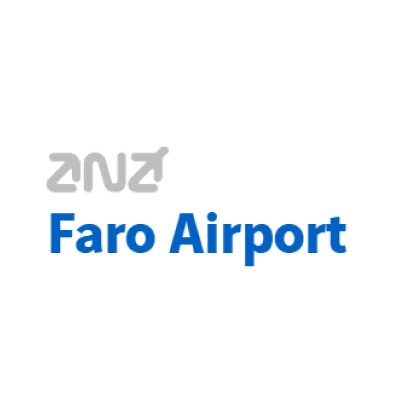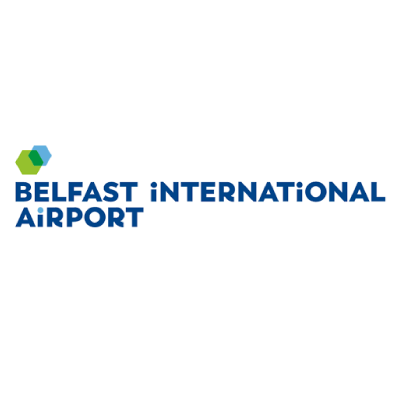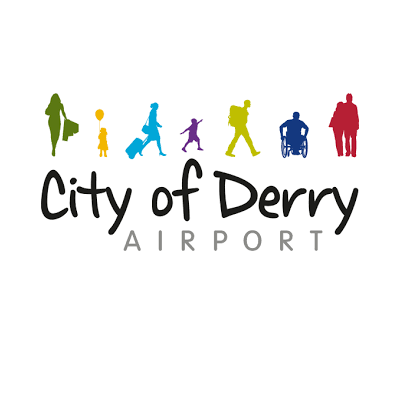Technology in 2019 is evolving faster than it’s possible to assimilate it, and customer expectation has risen exponentially. There’s been a revolution in customer experience, (CX) and this is largely due to the increasing sophistication of predictive analytics.
Advances in retail ecommerce are no longer novel; they’re the norm. And experiences that fall below expectation will result in lost sales and loss of brand trust. Customers now demand that their digital CX is highly personalised, seamless and secure, and if it isn’t they’ll simply go elsewhere.
However, the technology is in place, and consumers are more engaged than ever, so this is an exciting time for travel. As explained in the World Economic Forum’s 2017 white paper, Digital Transformation Initiative Aviation, Travel and Tourism Industry,
“Digital is one of the developments that enables companies to offer services instead of products. As an industry, aviation, travel and tourism has a head start, because of its position as a heavily service- oriented ecosystem at the ‘new economy’ end of the spectrum.”
It’s true that digital offers airports the opportunity to truly transform the customer experience. The rise of mobile gives travellers the tools to manage the entire process of their trip from researching through to booking and beyond, online, confidently and conveniently. Alongside the essential operational services such as flight and car park bookings, the airport ecosystem provides almost endless opportunities for the promotion of products that add value for the customer, providing a top class travel experience. This improves CX on the ground and provides valuable revenue for the airport.
To succeed in this highly competitive environment, airports must broaden their reach to include these cross sell and up sell ancillary services and products. The airport can become a one-stop travel shop. Once passengers are on board, those people passing through the terminal building represent a captive audience, and there’s real potential here when it comes to on-site retail, food and beverage concessions and brand advocacy.
But where previously CX would have centred on customer service in the terminal, in 2019 it relates to the whole customer journey. This requires airports to apply a customer-centric approach, leveraging the proper solutions and advances in technology and paying attention to trends.
Transforming the Customer Experience with Digital Innovation
Let’s look at some of the technology that is currently supporting airport ecommerce and helping airports to build strong CX…
Essential Ecommerce
Travel industry ecommerce has come a long way since Alaska Airlines started selling tickets online more than two decades ago. Airports can now sell flights, ancillary services and even complete holiday packages online.
Once the airport has successfully convinced the passenger to share personal data, each customer can be tracked and targeted with timely offers throughout the course of their journey, from booking to return, and beyond. As ecommerce platforms, and the technology that consumers use to access them, become more advanced, new ways of generating ancillary revenue emerge.
Rezcomm’s technology is the world’s first combined ecommerce platform for airports. The solution will integrate seamlessly into your airport’s own website, making it easy to build meaningful relationships with your passengers. This enables you to create the personalised experiences that will generate a greater sense of customer loyalty.
Predicting Behaviour
In 2019, Big Data is no longer news. We know that the details gathered from passengers can help to make the customer experience better and more personalised. But what’s exciting is that the way data can be used to predict customer behaviour over long periods of time is becoming far more sophisticated, taking the guesswork out of ecommerce.
For several years now, marketing teams have been able to anticipate shifts in what passengers want, and to respond more quickly to areas where something is lacking. This kind of valuable insight is possible when you combine an airport ecommerce platform with a Customer Relationship Management (CRM) and Business Intelligence (BI) solution that is capable of analysing large amounts of data and displaying the results in a user-friendly dashboard.
With these tools, passenger behaviour can be predicted across the whole journey, and customers can be closely tracked within the terminal, meaning that the airport can deliver more valuable experiences.
Copenhagen has been using sensor-based predictive modelling since late 2013 to measure passenger flow and waiting times. This means staff can be deployed in real-time to pre-empt any potential problems which might have a negative effect on the customer experience. In 2015, Cincinnati’s CVG airport demonstrated how use of sensors helped to reduce waiting times by as much as four and half minutes.
The basis of predictive analytics is that by knowing what your customer purchased in the past, you can predict what they might buy in the future.
In 2019, huge amounts of data exist, but data alone is not enough. In order to get ahead of the competition, it’s necessary to leverage AI and machine learning to look forwards, rather than contenting yourself with looking backwards. The fact is; airports that get predictive analytics right can greatly improve their CX.
Research shows that:
- 59% of customers have higher expectations than they did a year ago
- 80% of customer engagements can be handled by chatbots
- By 2030, 70% of companies will have adopted some form of AI, and the majority will be using a full range of AI technology
- 77% of high-performing customer service teams rate their ability to leverage artificial intelligence as excellent or above average
6 Types of Predictive Analytics for Airport CX
1. Predicting Customer Needs
This is the basis of analytics and involves predicting what the customer needs based on previous buying behaviour. If your customer booked a summer family holiday in January last year, you can predict that they may be looking to do the same this year and target them with destinations and offers. This simple predictive concept can also be used to tailor the booking journey on your website and to inform responsive blocks in email campaigns.
2. Product Feedback in Real-Time
Predictive analytics occurs in real time, meaning you can tailor a customer’s experience as it happens. This feature is noticeable in the algorithms of services like Netflix, where watching one show impacts the recommendations of further viewing. The analytics change quickly based on this customer feedback and preferences (buying and browsing habits) and so it becomes possible to capture what the customer wants at that moment.
3. Identifying Abandonment Risks
Data can also identify which customers are most likely to leave the website or booking journey, and so airports that use predictive analytics to identify flight risk factors can significantly improve customer retention. FedEx uses data to predict which of its customers will book with a competitor with 60-90% accuracy. This information can then be used to reach out with targeted messages to bring the customer back on board.
4. Pre-emptive Service
Data can be leveraged to predict important events within the customer journey, meaning you can approach your customer with new products and services when they need them most.
5. Optimised Pricing Models
Predictive analytics allows you to implement flexible tariffs for services such as parking, so prices can change to offer the best value and ROI depending on factors such as peak seasonal use and capacity in real time.
6. Predicting for Operational Efficiency
This technology also allows your airport to anticipate passenger traffic within the terminal, meaning you can deploy the optimum number of staff for a smooth customer experience without compromising operational efficiency. It enables you to save money when there is less work for staff, and provide the best service during busy times by ensuring there are enough people to help your passengers.
Getting Creative with Apps
According to Phocuswire, research has shown that for the second year running, travellers are turning to the app experience over mobile web for every travel activity aside from searching for car rental and in-destination activities.
However, while it’s clear passengers are downloading and using apps, travel brands are failing to keep up with the market. Only 17% of travel brands say that apps are a big focus, while 46% feel they are not investing enough. 16% aren’t investing in mobile at all.
Airports can use their own apps to make life much easier for customers. Combined with customer data, they can be used to facilitate every part of the passenger’s journey. An app can offer real-time flight and gate information, give details about security and check-in wait times, tell the passenger their distance and time to the gate, provide a weather forecast for the destination, up and cross sell ancillary goods and services such as security fast-track and lounge upgrades, and deliver special offers for airport concessions based on previous buying behaviour.
Centring on customer convenience, Heathrow’s Alexa skill app is the first in the UK to combine with voice activated technology. The passenger can check the status of their flight by saying, “flight”, followed by the flight number, and Alexa confirms the details and locates the most recent status update for that flight
Next Level Wayfinding
Navigating the airport terminal can be one of the most stressful aspects of travelling, especially when time is limited. However, navigation is another function that lends itself to an app, especially as mobile users will frequently use their device as a wayfinding tool when travelling and parking.
Back in 2016, airports including Côte d’Azur, Hong Kong, Singapore and San Francisco were using inexpensive wayfinding beacons to deliver timely and personalised information to passengers via apps. These apps enhanced wayfinding for customers (some even integrated Apple’s Voiceover technology to assist the visually challenged) and helped them to discover the airport services that were most relevant to them.
The beacons also facilitated contextual advertising based on the passenger’s location within the airport. Using CRM technology, advertising could be made even more selective for passengers who had shared their data with the airport, by determining the interests and buying behaviour of the individual passenger.
In 2018, London’s Gatwick Airport launched an award winning app integrating augmented reality (AR) with wayfinding. Gatwick’s app improves CX by providing personalised, real-time flight updates, gate information and security queue times direct to the user’s smartphone with the use of intuitive maps and the placing of 2000 beacons in the terminal building.
Data Management
According to Gartner, data ethics and privacy is the top tech trend for 2019. As more and more data becomes available, allowing for an unprecedented enrichment of the customer experience, it becomes integral to that customer experience to protect and control the data. After all, there’s not a lot that screams, “I’m having a bad day,” louder than a hacked email account. Post-GDPR, airports must place a great deal of attention on data ethics and management. It’s vital that you see to it that your passenger data is safe.
Prior to GDPR, businesses could collect personal data without explaining what they were going to do with it. There was little or no transparency, and this became a concern for consumers. The result was often a loss of trust.
Data ethics represents your airport’s handling of data across the supply chain, including collecting, aggregating, sharing, analysing, storing and disposing of the data. If you don’t already have a strong strategy in place to protect the data of your passengers, remember, privacy is the bedrock of customer and employee trust. While you have a legal obligation to comply, trust is also a necessary component of success.
Data management is a challenge as volumes of data increase thanks to automation, and the data itself is more complex than ever. This means it’s important to have a future-proof means of capturing, processing and analysing that data. By partnering with Rezcomm, your airport can be sure that its passenger data is secure.
These are just some of the ways in which you can leverage technology to improve your customer experience and increase ancillary revenue. Other trends to look out for include virtual and artificial realities, voice activation and new ecommerce app initiatives like AtYourGate, all of which offer new and exciting opportunities to land sales and build passenger loyalty.
Rezcomm provides pioneering ecommerce solutions for the airports and venues. To find out how we can help to reach more passengers and make more sales with customer segmentation and targeted marketing, contact the team today.






























